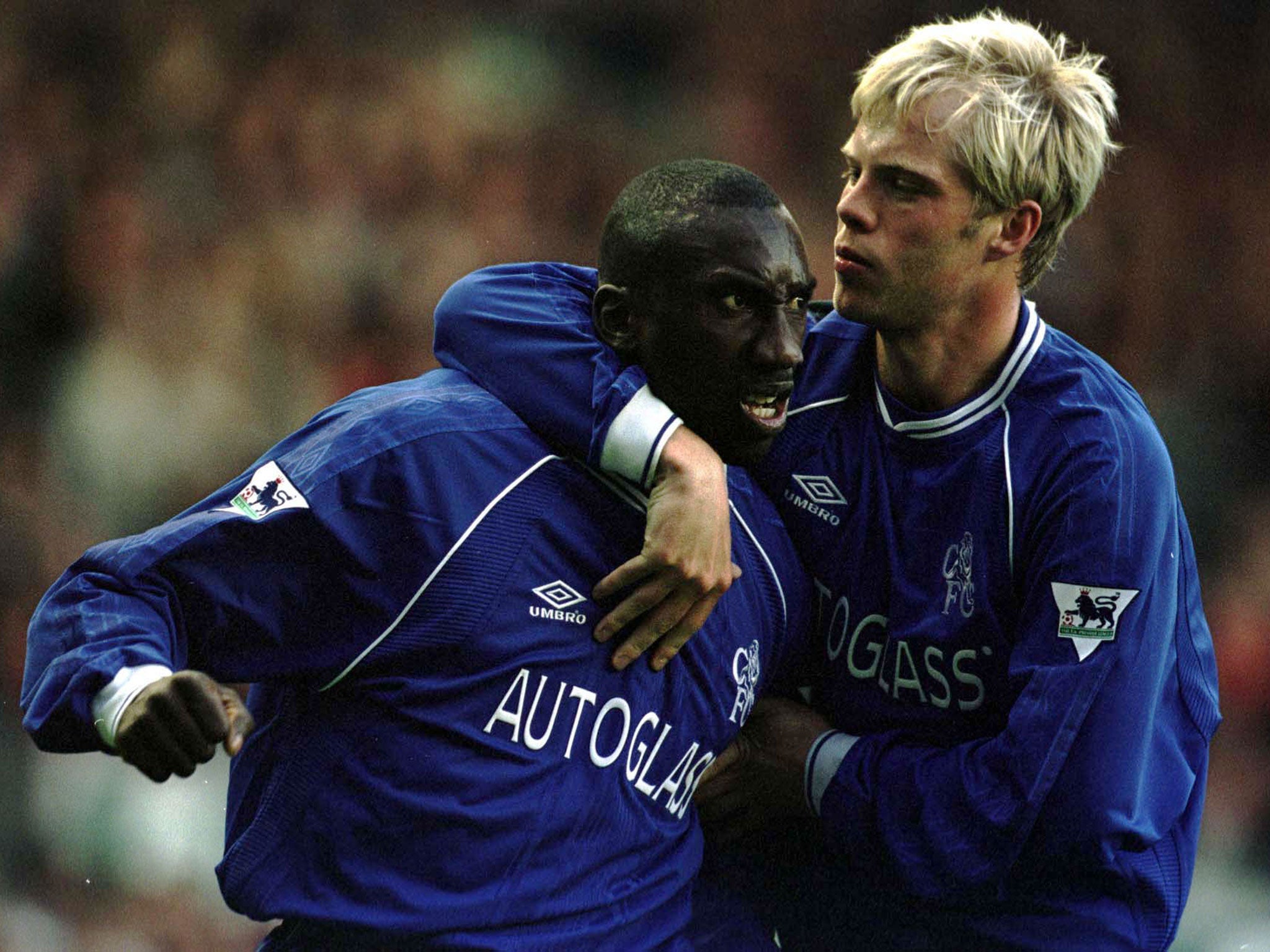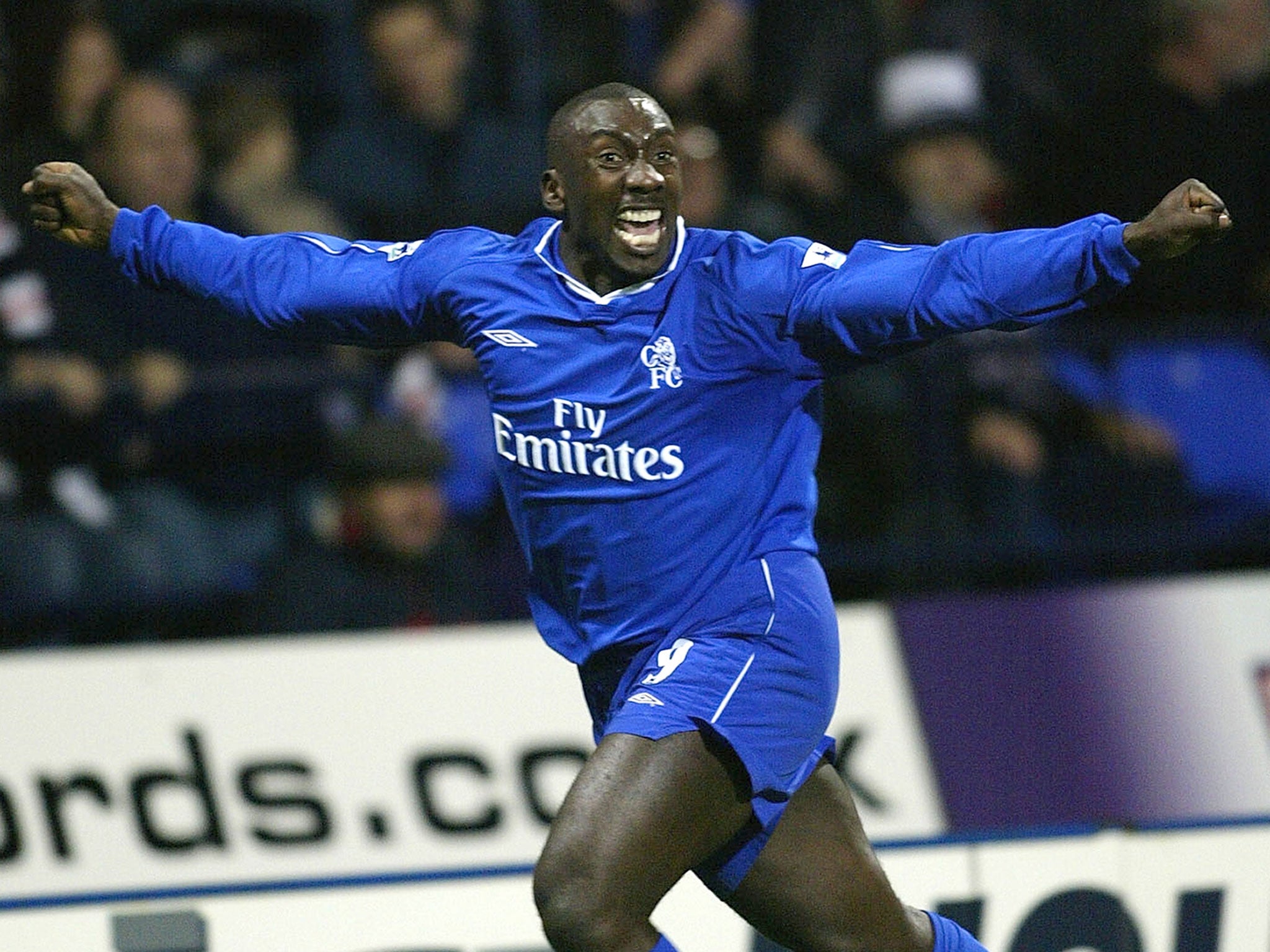Your support helps us to tell the story
From reproductive rights to climate change to Big Tech, The Independent is on the ground when the story is developing. Whether it's investigating the financials of Elon Musk's pro-Trump PAC or producing our latest documentary, 'The A Word', which shines a light on the American women fighting for reproductive rights, we know how important it is to parse out the facts from the messaging.
At such a critical moment in US history, we need reporters on the ground. Your donation allows us to keep sending journalists to speak to both sides of the story.
The Independent is trusted by Americans across the entire political spectrum. And unlike many other quality news outlets, we choose not to lock Americans out of our reporting and analysis with paywalls. We believe quality journalism should be available to everyone, paid for by those who can afford it.
Your support makes all the difference.Jimmy Floyd Hasselbaink has been named manager of League Two Burton Albion.
The former Chelsea striker inhabits that rare breed of footballer that seems to be on the decline in recent years as wages; the cult hero.
Hasselbaink, born Jerrel, also happens to be my childhood hero.
The infrequent Netherlands international arrived at Stamford Bridge with a big reputation and an even bigger price tag in May 2000.
The £15m fee paid to Atletico Madrid matched the British transfer record, held by Newcastle when they brought Alan Shearer home in 1996, and broke the £10m club record the Blues had spent on misfiring Chris Sutton a year earlier.
Hasselbaink had plenty to prove on arrival in west London. Though it has been diluted after years apart, at the turn of the century the Chelsea rivalry with Leeds United was huge, and many Blues fans, especially those who had supported the club in the 1960s and 80s, considered the Yorkshire club their worst enemy.
Growing up in a Chelsea household, I was taught to hate ‘Dirty Leeds’, whose success during the Don Revie-Billy Bremner era had been brought on through snide, cheating tactics; the polar opposite to the stylish Chelsea teams led by Charlie Cooke and Peter Osgoode and managed by Dave Sexton (at least that's what I was told).
In just two seasons at Leeds Hasselbaink had become a star, with 20 goal hauls in both campaigns. He might have spent a year in Spain, where he scored 24 La Liga goals, but his Leeds ties were easily remembered.
Despite his past, the stocky striker started well scoring in his Charity Shield debut against Manchester United, a 2-0 win, and again a week later when the Blues beat London rivals West Ham on the opening day of the Premiership season.
But Chelsea struggled thereafter and Gianluca Vialli was sacked just five matches into the season, replaced by Claudio Ranieri, his manager the previous season in Spain.
Hasselbaink was absolutely superb. Whether playing up front with Gianfranco Zola or Eidur Gudjohnsen, the striker was a huge threat and one of the best players in the division, finishing top of the Premier League scoring charts with 23 goals. The next season he was even better, as he and Gudjohnsen developed a telepathic partnership that brought a combined goal tally of 52 goals in all competitions; he finished second in the League scoring charts, behind Thierry Henry, scoring 23 goals again.
During this period Chelsea played some of the best football seen at the Bridge, though their propensity to drop easy games stopped their progress among the elite.
Hasselbaink caught my 13-year-old imagination not just through his sheer scoring record, but because he always seemed to score in the most important matches. Whether playing the big clubs or London rivals, Hasselbaink found the net.

Chelsea, obviously, at the time weren’t the force they are now, and I was just one of three Chelsea fans in my Essex school. Though we were usually good for a top six finish, the Blues and I were largely forgotten about by the scores of Manchester United, Arsenal and Liverpool fans at the top of the table – and vastly outnumbered by West Ham and Spurs fans in the middle.
Jimmy provided the bragging rights any 13-year-old boy needs to survive.
In 28 games against those five clubs from 2000 to 2002, Hasselbaink scored 26 times, helping the club to 14 wins, seven draws and seven defeats. Arsenal were the only club he failed to beat in that period, but Chelsea still drew three times in six meetings with the Gunners, though one of those defeats was the heart-breaking FA Cup Final loss when the striker was clearly not fit enough to play.
He scored excellent goals in some truly fantastic wins, the 3-0 at Old Trafford lingers long in the memory, as does his masterful hat-trick in the 4-0 against Spurs.
As well as scoring plenty of goals, Hasselbaink scored some absolute belters, he possessed one of the best strikes ever seen at Stamford Bridge, was an expert free-kick taker, great with both feet and decent in the air (make sure you watch the video above).
Adding to his legend was the general demeanour with which he played football; after scoring he would celebrate in one of two ways – with either a great big beaming smile, or looking positively miserable, with a brow furrowed all the way to his boots.
The goals slowed down in the next two years, but even after Roman’s roubles came into the club and the likes of Adrian Mutu and Hernan Crespo arrived, he still played a key part in the squad and was again the side’s top scorer in 2003-04, the third time in his four years at Stamford Bridge.
Though Chelsea failed to win any honours during his brief stay, Hasselbaink helped the club reach an FA Cup final and the semi-final of the Champions League. The club began to move onto bigger things but he left the club with a fantastic record of 87 goals in 177 matches.
It was a truly sad day.

Join our commenting forum
Join thought-provoking conversations, follow other Independent readers and see their replies
Comments